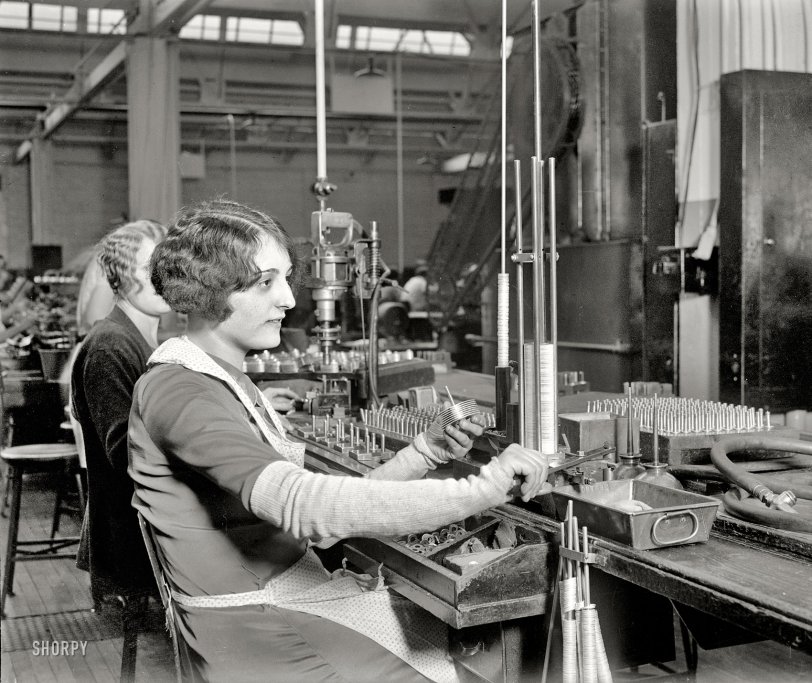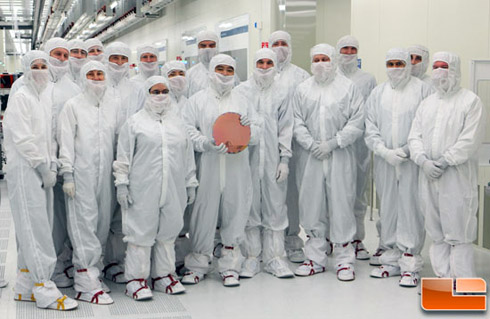


Framed or unframed, desk size to sofa size, printed by us in Arizona and Alabama since 2007. Explore now.
Shorpy is funded by you. Patreon contributors get an ad-free experience.
Learn more.

- Baldwin 62303
- Baldwin VO-1000
- Cold
- No expense spared
- Tough Guys
- Lost in Toyland
- And without gloves
- If I were a blindfolded time traveler
- Smoke Consumer Also Cooks
- Oh that stove!
- Possibly still there?
- What?!?
- $100 Reward
- Freeze Frame
- Texas Flyer wanted
- Just a Year Too Soon
- WWII -- Replacing men with women at the railroad crossing.
- Yes, Icing
- You kids drive me nuts!
- NOT An Easy Job
- I wonder
- Just add window boxes
- Icing Platform?
- Indiana Harbor Belt abides
- Freezing haze
- Corrections (for those who care)
- C&NW at Nelson
- Fallen Flags
- A dangerous job made worse
- Water Stop
Print Emporium
Tune In Tomorrow: 1928

Philadelphia, Pennsylvania, circa 1928. "Assembling room, Atwater Kent radio factory." National Photo Company Collection glass negative. View full size.
Bobs
Did any woman NOT have a bobbed hairstyle in the '20s?
Re: "Doc" Emmet Brown
Not only did he know it was a "capacitor", he knew how properly to pronounce "Gigawatt"!
Dave
(carefully de-splitting my infinitive)
It's a variable capacitor / condenser
Selenium rectifiers weren't invented until 1933 so assuming the date on the photo is accurate it couldn't be a selenium rectifier. Close inspection of the magazine holding the parts for assembly and the assembled parts in the back ground lead me to believe they are indeed "D" shaped and therefor a variable capacitor / condenser.
Variable Cap for Sure
Photographer posed capacitor so rotor plates could be seen. Atwater Kent produced Model 42 radio in 1928 which used three variable caps ganged together. Model 42 used a tube in the power supply and not a selenium rectifier which were not produced until the early 1930s. See picture of top view of Model 42.

re: Capacitor vs Condenser
You may be right. In fact, we both may be right. Or, less likely, I may be wrong. In any case, happy clear-channel receivings to you.
Not a rectifier
This photo predates the invention of selenium rectifiers by 5 years.
It was some time in the late 20s to early 30s that indirectly heated cathodes were invented to allow the filaments to be powered by AC electric. Otherwise, they had to use batteries which was inconvenient with the high current requirements of early triode vacuum tube filaments.
Around the same time, more efficient pentode vacuum tubes were invented. They offered more gain which helped improve reception and reduced the number of amplification stages required in a receiver.
Capacitor vs Condenser
In this debate I look to that eminent Time Travel pioneer "Doc" Emmett Brown. (see 'Back to The Future', 'Back to The Future II, and 'Back to The Future III') His revolutionary Flux Capacitor clearly shows that the term "capacitor" was accepted well before November 5, 1955.
Variable Capacitors
They'd be called variable condensers then.
I thought that's what they were but the plates seem to be complete circles, which won't work for a variable capacitor.
"Amos 'n' Andy"
went on the radio in 1928 and sold more radios than Uncle Miltie did TVs in 1950. I'm sure Atwater-Kent, Philco, Zenith, and all the radio makers plus Pepsodent Toothpaste were most appreciative for that jolt in sales.
As Andy may have said "A'int dat sumpin!"
Variable Name
Now more aptly named capacitors, up until at least the late '50s they were known as condensers.
Variable caps, or ??
It looks like both the large disks and the smaller (spacer?) washers are circular. That won't work for a variable capacitor, as the rotating set of plates needs to present more or less extension in between a fixed set as the shaft turns. These could be Selenium rectifier stacks, for an AC-powered radio.
Amazing.
You mean people used to work in factories, in this country, in the old days? And I thought everything was always made in third world countries. Wow.
[From the Shorpy Chamber of Commerce: Electronics manufacturing and assembly today employs many more people in the United States than it did in 1928. Below, workers at an Intel fabrication plant in Lehi, Utah. The biggest producer of manufactured goods on Planet Earth is not China or Japan but the good old U.S. of A.! - Dave]

I Like My Girls and Capacitors Variable
Assembling the variable capacitors which were the heart of the tuning circuit of radio receivers and transmitters for decades. One or more plates were mounted on a shaft which rotated the plates between a set of plates fixed on a base. Your pocket 9 volt AM transistor radio had them, but they were a lot smaller. With a few minor exceptions, micro chips have relegated variable capacitors to the electronic buggy whip bin.
Getting in tune
The subject of this photo, an attractive young woman, looks to be assembling an adjustable (or tunable) capacitor. The metal plates of the movable half would move in and out from between the plates of the fixed half, thus changing the frequency that would be received. She looks to be working on the movable part.
























On Shorpy:
Today’s Top 5